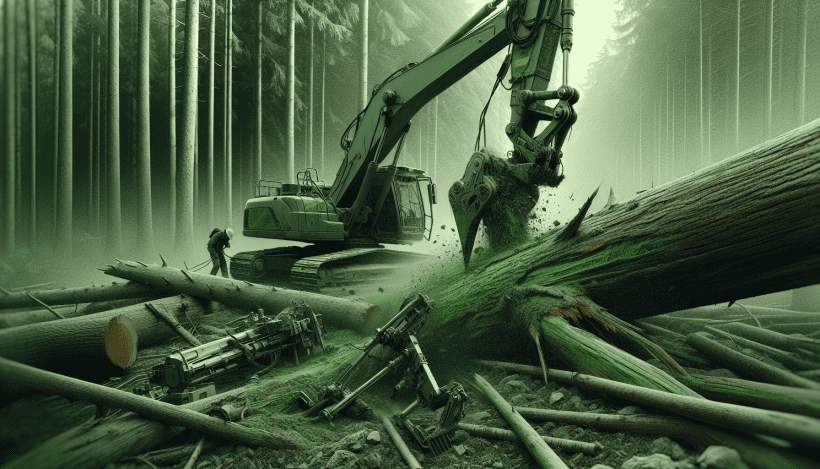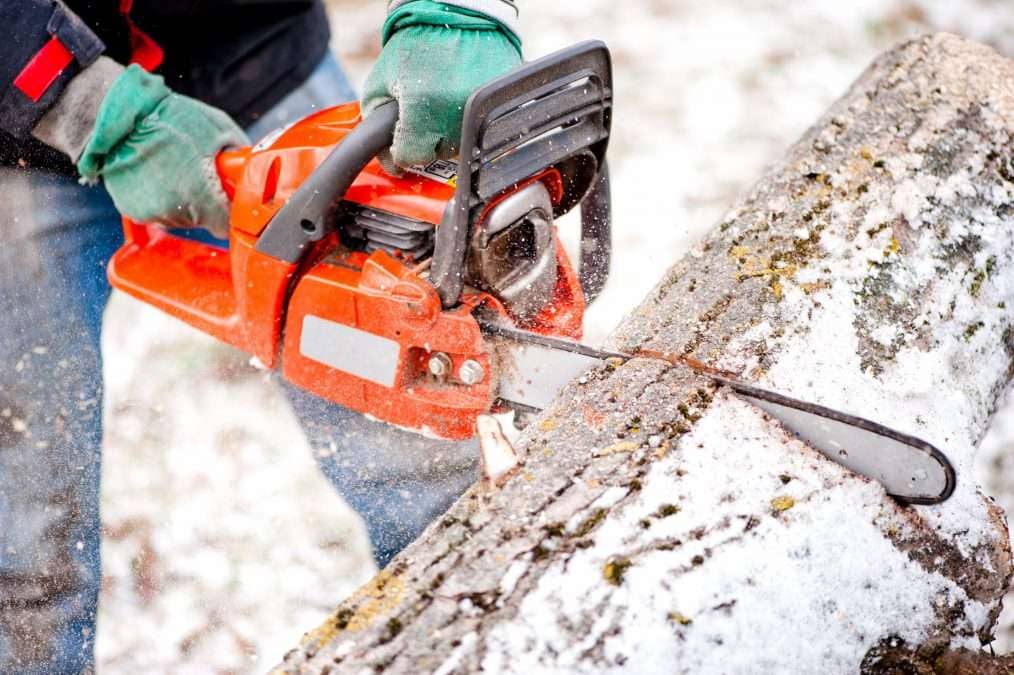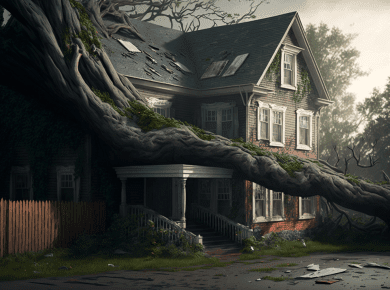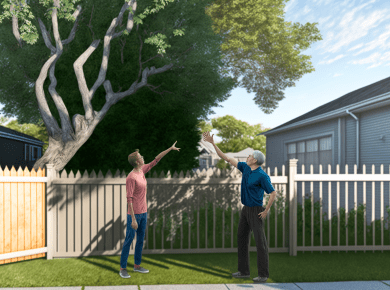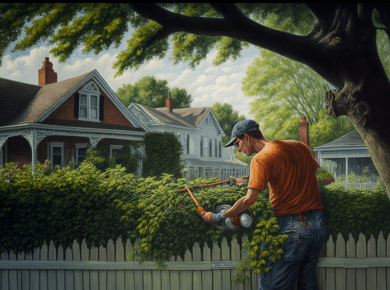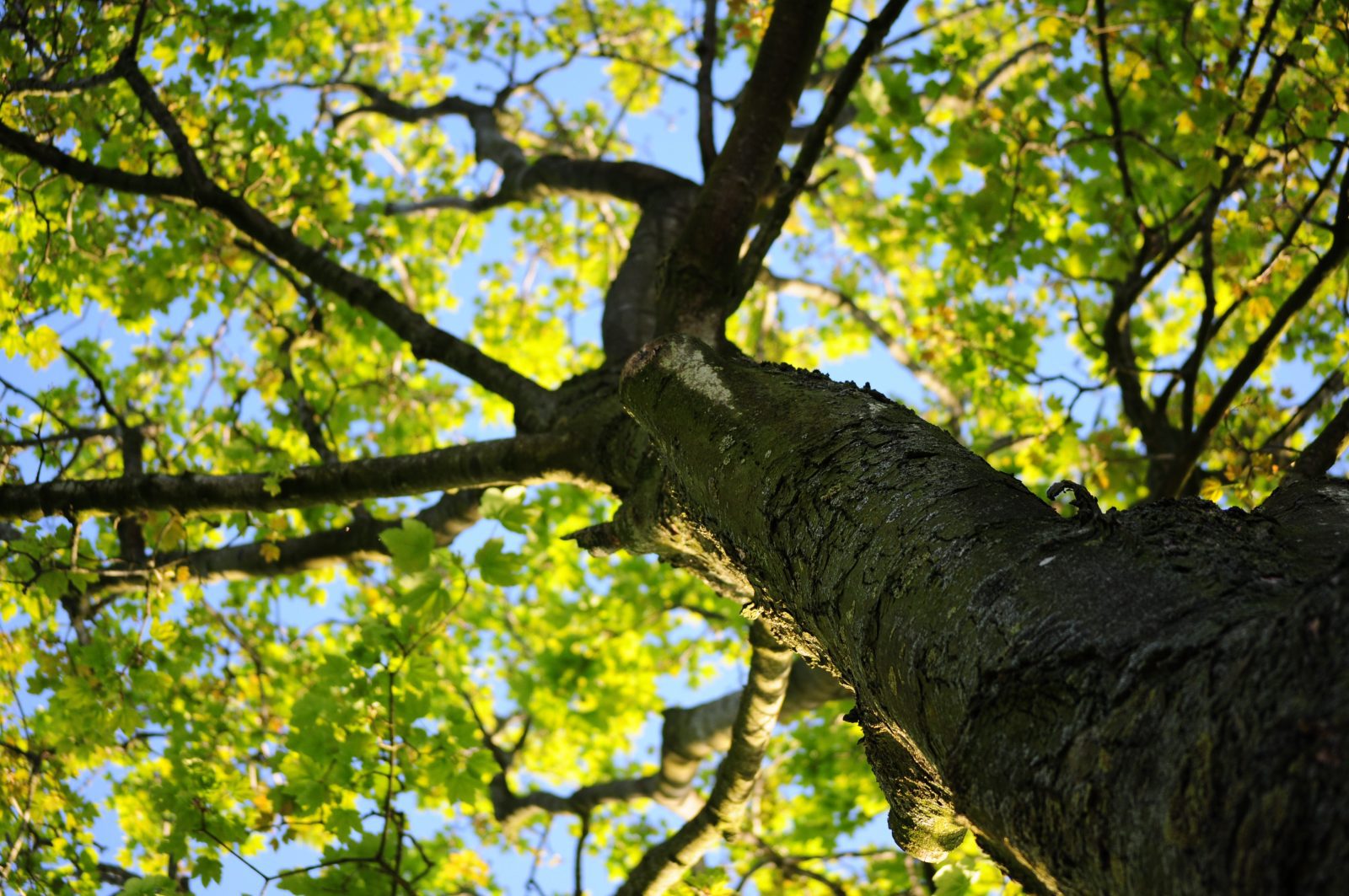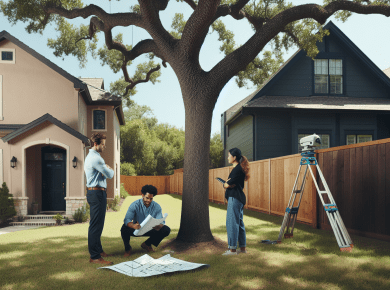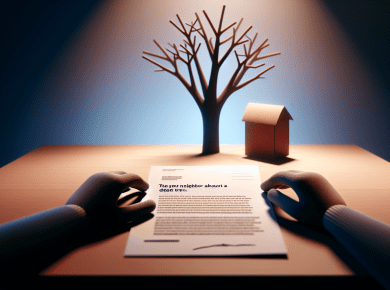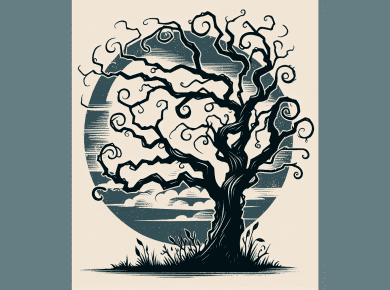Understanding Tree Disputes
Tree disputes between neighbors can arise from a variety of situations, frequently leading to conflicts over fallen trees and their subsequent removal. This section provides an overview of common neighbor disagreements related to trees and the laws governing fallen tree removal.
Neighbor Disagreements Overview
Disputes often occur when a tree falls, particularly when it affects property boundaries or damages structures. Neighborly disagreements can surface regarding who is responsible for the removal of the fallen tree. Significant factors include:
- Ownership of the Tree: Determining tree ownership is crucial in establishing who bears responsibility for its management and removal. If a tree straddles the property line, both neighbors may share responsibility unless otherwise agreed upon.
- Tree Condition: If a neighbor’s tree was already diseased or damaged prior to falling, this may complicate the concept of liability.
To further understand these dynamics, neighbors may consider assessing the tree’s health and consulting local laws about shared property lines. For detailed guidance, refer to our article on who is responsible for fallen tree removal.
Fallen Tree Removal Laws
In many jurisdictions, laws dictate the procedures and responsibilities surrounding fallen tree removal. Homeowner’s insurance often plays a role in covering removal costs when trees fall due to natural events. For example, if a tree falls due to wind or other weather conditions, the costs to remove it may be included in a homeowner’s insurance policy (Branch Out Tree Care). Here are some common legal points regarding fallen tree removal:
| Factor | Details |
|---|---|
| Insurance Coverage | Costs of removal may be covered if the tree fell due to natural causes. |
| Public Land Responsibility | Trees on public land falling onto private property are the responsibility of community officials. |
| Legal Liability | If a neighbor’s tree causes damage, legal liability may arise, making professional advice advisable. |
Consultation with legal authorities can clarify any uncertainties related to tree law. Many neighbors will benefit from reviewing local property laws, especially concerning trees on or near property lines, such as those discussed in our article on tree on property line.
Navigating tree-related disputes will often require neighbors to engage in open dialogue while adhering to local laws and regulations to achieve resolution. For issues related to overhanging branches and responsibilities, refer to our discussions on who is responsible for cutting overhanging tree branches and other related topics like neighbors tree fell on my house and can I throw neighbors tree branches back in their yard.
Safety Regulations and Resources
Addressing fallen tree removal not only involves understanding the laws surrounding tree disputes but also the safety measures necessary to prevent accidents during the removal process. This section provides valuable insights into the safety regulations and resources available for those involved in tree management.
Maryland Safety Awareness Campaign
In Maryland, the Maryland Occupational Safety and Health (MOSH) has launched a safety awareness campaign to reduce injuries and fatalities linked to tree trimming and removal work. This initiative offers various resources, including free seminars, publications, and expert speakers across the state, to educate workers and residents about safe practices in tree removal (Maryland Department of Labor).
Table 1 presents an overview of the resources offered by MOSH:
| Resource Type | Description |
|---|---|
| Seminars | Free education sessions on safety practices for tree removal and trimming. |
| Publications | Informative materials on safety protocols and regulations. |
| Expert Speakers | Access to professionals for guidance on safety measures. |
Workplace Safety Tips
Safety is paramount when engaging in tree trimming or removal activities. Workers and homeowners are advised to follow certain safety protocols to minimize risks. The safety bulletin from MOSH includes the following tips:
- Always wear appropriate personal protective equipment (PPE), including helmets, gloves, and safety goggles.
- Be aware of the surroundings, particularly concerning power lines and overhead hazards.
- Use properly maintained equipment and ensure that it is suitable for the job.
- Have a clear plan for tree removal, including escape routes in case the tree falls unexpectedly.
For those seeking more information about who is responsible for tree removal, check out our article on who is responsible for fallen tree removal.
Contacting Safety Consultation Services
Individuals in Maryland can benefit from contacting MOSH consultation services for workplace evaluations, hazard assessments, and advice on eliminating risks associated with fallen tree removal. These consultations are free of charge and can be essential for ensuring compliance with safety regulations. Interested parties can reach MOSH consultation services at 410-527-4472 for assistance (Maryland Department of Labor).
Engaging with these resources can enhance safety practices around fallen tree removal, ensuring that both property and individuals are protected during the process. For further information on related topics, explore our articles on who is responsible for cutting overhanging tree branches and neighbors tree fell on my house.
City-Specific Regulations
Understanding the local regulations regarding fallen tree removal can help neighbors navigate disputes effectively. Here are the specific rules in several key cities:
Birmingham, Alabama
In Birmingham, there are no specific regulations regarding the removal of trees by the city. The responsibility for caring for and removing a tree on private property lies entirely with the owner. Furthermore, private tree removal contractors are not required to obtain permits before removing a tree on private land. For more information, visit how much to cut down a tree.
Juneau vs. Anchorage, Alaska
Juneau has no specific requirements for tree removal, thereby not necessitating any permits for removal. In contrast, Anchorage has established rules whereby the director of development services can remove trees deemed dead, hazardous, or improperly located on private property. This distinction is crucial for residents living in these cities to understand their responsibilities. More details can be found at who is responsible for fallen tree removal.
Phoenix, Arizona
The city of Phoenix does not require permits or notifications for homeowners wishing to remove trees from their property. However, there is a visibility ordinance that prohibits trees over one foot in diameter or ten feet high from obstructing traffic signs, signals, or pedestrian views. This regulation aims to maintain public safety and visibility at intersections. Full guidelines can be referenced by looking at neighbors tree fell on my house.
Sacramento, California
In Sacramento, a permit is only necessary for removing trees recognized as “heritage trees” or for oak trees, which are protected throughout California. These regulations ensure that significant trees are preserved. Homeowners must verify if their tree falls under this designation before proceeding. Further information regarding tree regulations can be found via tree on property line.
Salem, Oregon
While state laws in Oregon do not impose regulations on tree removal, the city of Salem has specific protections for heritage trees. These trees cannot be removed or cut down without prior permission. Knowing if a tree qualifies as a heritage tree is important for property owners in Salem. For more on similar regulations, check who is responsible for cutting overhanging tree branches.
By being informed of the specific laws governing fallen tree removal in their cities, neighbors can better manage disputes and ensure compliance with local regulations.
Hazards of Fallen Trees
Fallen trees can pose a variety of hazards, especially when it comes to safety risks, legal issues, and environmental impacts. Understanding these hazards is essential for neighbors dealing with tree-related disputes.
Electrocution Risks
One of the most serious hazards associated with fallen trees is the risk of electrocution. Between 2009 and 2014, electrocution accounted for 17% of fatalities among tree care workers, underlining the dangers present during tree removal operations near power lines (American Climbers).
When a tree falls and makes contact with power lines, it can lead to instantaneous and life-threatening electrocution. Even if a tree does not directly contact a power line, electricity can arc from the line to the tree, creating a deadly situation.
Safety Near Power Lines
Working near power lines necessitates strict adherence to safety regulations. For instance, in Massachusetts, property owners are prohibited from trimming or removing trees within 10 feet of primary power lines unless they are OSHA-certified line clearance workers (American Climbers). This underscores the importance of engaging qualified professionals for any tree work adjacent to power lines.
It is essential for neighbors to understand these legal restrictions to avoid potential fatal accidents and legal liabilities. Here’s a brief overview of safety guidelines:
| Hazard | Recommended Action |
|---|---|
| Trees near power lines | Hire an OSHA-certified professional |
| Trees within 10 feet of power lines | Do not attempt removal without certification |
| Fallen trees on property | Assess the situation from a safe distance |
| Arcing electricity | Maintain a minimum distance of 10 feet |
Importance of Professional Arborists
The involvement of professional arborists in tree removal operations cannot be overstated. These experts not only have the necessary qualifications but are trained to recognize and mitigate risks associated with fallen trees. Engaging a professional arborist ensures safe and efficient removal procedures, protecting both property and personal safety.
Neighbors encountering disputes or challenges related to fallen trees should consider consulting licensed professionals for both tree assessment and removal. This proactive measure can prevent accidents, legal complications, and unnecessary disputes with neighboring property owners. For more insight into issues around responsibility, visit who is responsible for fallen tree removal.
Overall, recognizing the hazards of fallen trees emphasizes the need for legal understanding and cooperation among neighbors while ensuring safety during such interventions.
Environmental Impact of Deforestation
Deforestation has a significant impact on the environment, particularly concerning fallen tree removal. Understanding these effects is vital for neighbors involved in tree-related disputes or for those considering removal for any reason.
Loss of Habitat
Deforestation leads to the loss of critical habitats for various species. Approximately 70% of land animals and plant species reside in forests. The destruction of these habitats poses threats to both known and unknown species, disrupting the balance of local ecosystems (Pachamama Alliance).
The following table illustrates the percentage of species at risk due to habitat destruction:
| Type of Species | Percentage at Risk |
|---|---|
| Mammals | 25% |
| Birds | 13% |
| Amphibians | 41% |
| Fish | 19% |
Increased Greenhouse Gases
Trees play a crucial role in regulating carbon dioxide levels in the atmosphere, acting as carbon sinks. When trees are removed, greenhouse gases are released into the atmosphere, resulting in increased levels of carbon. This contributes to climate change and its associated impact on global weather patterns (Pachamama Alliance).
The following data outlines the estimated increase in atmospheric carbon due to deforestation:
| Year | CO2 Increase (Million Metric Tons) |
|---|---|
| 2018 | 4,000 |
| 2019 | 4,500 |
| 2020 | 4,800 |
Water Cycle Disruption
Trees play a vital role in regulating the water cycle by controlling moisture levels in the atmosphere. The Amazon rainforest, recognized for its millions of trees, releases moisture that forms atmospheric “rivers,” influencing global weather patterns. Deforestation disrupts this natural process, leading to drier conditions, soil depletion, and adversely affecting crop production (Pachamama Alliance).
An example of how deforestation affects precipitation is illustrated in the following table:
| Location | Annual Precipitation Reduction (inches) | Effects |
|---|---|---|
| Amazon Rainforest | 12 | Increased drought |
| Pacific Northwest | 10 | Altered ecosystem |
Understanding these environmental impacts is essential for neighbors who may be facing tree disputes. It highlights the importance of considering both the legal and ecological ramifications of fallen tree removal, as well as the collective responsibility in maintaining a balanced environment. For more information regarding responsibilities and issues related to tree removal, consult our guide on who is responsible for fallen tree removal.
Responsibilities and Insurance Coverage
Clarifying responsibilities and understanding insurance coverage is crucial when dealing with fallen tree removal. This section breaks down the key considerations in these areas.
Determining Removal Responsibility
Understanding who is responsible for the removal of a fallen tree largely depends on the tree’s location and ownership. Here are the general guidelines for determining responsibility:
| Scenario | Responsibility |
|---|---|
| Tree trunk’s roots within neighbor’s property | Neighbor is responsible for removal |
| Shared tree with roots on both properties | Removal responsibility shared between neighbors |
| Tree trunk grows within one’s property (even if it extends into another property) | Homeowner is responsible for removal |
Determining who the fallen tree belongs to is essential in deciding responsibility for removal. If a neighbor’s tree has its roots within its boundary, the responsibility lies with them. Conversely, if it is a shared tree, both neighbors must cooperate on its removal (Branch Out Tree Care).
Homeowner’s Insurance Coverage
Homeowner’s insurance can play a significant role in the costs associated with tree removal and damages. Generally, if a tree falls due to natural causes, insurance may cover the costs of removing the tree. In some cases, coverage could extend to cover up to 50% of the damages related to a fallen tree on a shared fence. If the tree fell because of negligence or poor care, it is less likely that the insurance would cover the removal costs (Branch Out Tree Care).
Public Land Trees
If a tree from public land, such as a park, falls on private property, the responsibility for its removal lies with community officials. However, homeowners might still need to rely on their insurance to cover the costs related to repairs from the damage caused by the fallen tree (Branch Out Tree Care).
For more extensive situations involving fallen trees, it may be beneficial to consult legal resources for further guidance. Additional information can be found on topics such as who is responsible for fallen tree removal and what to do if neighbors’ trees fall on your house.
Safety Measures for Fallen Trees
Addressing fallen trees requires careful consideration of safety measures to protect both individuals and property. The following sections outline key steps for assessing damage, removing branches safely, and disposing of tree debris responsibly.
Assessing Damage
Before taking action on a fallen tree, it is essential to assess the damage thoroughly. This evaluation helps determine the appropriate course of action and ensures safety. One must inspect the tree for visible signs of damage, such as broken or hanging branches, split trunks, or uprooted roots. Attention to safety is crucial, particularly when assessing storm-damaged trees. For more detailed information on safe practices, refer to Progressive Tree Service.
| Damage Type | Description |
|---|---|
| Broken Branches | Branches that are fractured or snapped |
| Hanging Branches | Branches that are precariously suspended |
| Split Trunks | Trunks that have visible cracks or splits |
| Uprooted Roots | Roots that have been lifted from the ground |
Proper Branch Removal Techniques
When it comes to removing hanging branches, it is important to follow safety protocols to prevent injury and further damage to the tree. A recommended method is to start from the top and work your way down, which reduces the risk of falling debris. Employing proper pruning techniques is essential. For instance, one should make clean cuts just outside the branch collar, as this encourages the tree’s natural healing process and prevents additional harm. More information can be found at Progressive Tree Service.
| Technique | Description |
|---|---|
| Start Top Down | Begin removal from the highest branches |
| Clean Cuts | Cut just outside the branch collar |
| Use Appropriate Tools | Utilize sharp, suitable tools for pruning |
Disposal and Recycling Guidelines
Once the branches and debris have been removed, proper disposal and recycling of storm-damaged trees should be the next step. It is vital to adhere to local regulations regarding tree disposal and recycling to align cleanup efforts with sustainable practices. Homeowners should check with local authorities for guidelines to ensure compliance. For detailed information on disposal methods, consider reviewing Progressive Tree Service.
| Disposal Method | Description |
|---|---|
| Local Disposal Services | Utilize municipal services for large debris |
| Recycling Facilities | Check for facilities that accept wood waste |
| Composting | Some smaller branches may be composted |
By following these safety measures, individuals can effectively manage fallen trees in a responsible and legally compliant manner. Whether assessing damage, employing proper removal techniques, or disposing of debris, the focus should always remain on safety and efficiency. For more information about responsibility in tree removal, refer to who is responsible for fallen tree removal.
